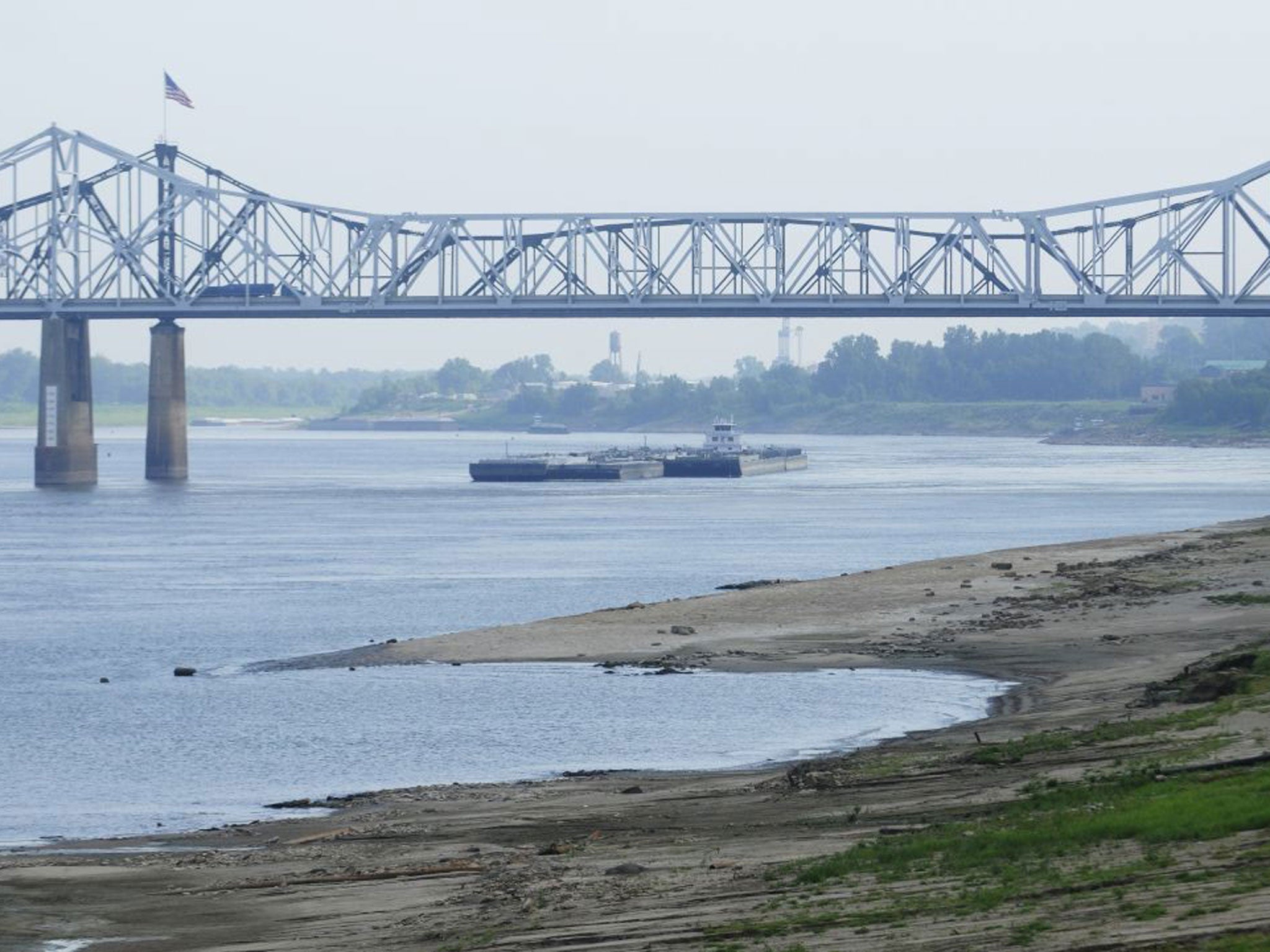Commodities fear as mighty Mississippi runs dry in drought

It may be America's largest waterway, but now even the mighty Mississippi is being choked by drought, as historically low water levels threaten to halt the flow of vital commodities from the heart of the US, with potentially devastating economic consequences.
Last summer saw the country's worst drought for more than 50 years, damaging crops across the Mid-West and making stretches of the Mississippi perilously shallow and narrow for barge traffic, which typically carries around $7bn of grain, coal, crude oil, cement and other materials and commodities along the river in December and January.
A news release issued by two trade groups, the American Waterways Operators and Waterways Council, warned last week that water levels had fallen faster than anticipated, and a section of the river may become impassable by Thursday. The groups estimate that a closure until the end of the month would affect about 8,000 jobs, $54m in wages and benefits, and 7.2m tonnes of commodities, worth around $2.8bn dollars.
Debra Colbert, senior vice-president of the Waterways Council, told The Independent: "We have never had an extended closure on the Mississippi. This is the height of the export shipping season. From now until March, more than 60 per cent of the nation's grain moves on the inland waterway, bound for export. The impacts are going to be enormous, not only to barge and towing operators, but also to farmers, shippers and producers, and those who rely on the waterways."
The worst-affected stretch runs 180 miles from St Louis, Missouri, south to Cairo, Illinois, where the Mississippi is met by the Ohio River. A depth gauge at Thebes, Illinois, measured just 6ft last week; the National Weather Service forecasts a drop to 3ft by Thursday, and as low as 2ft before February. The minimum depth for the safe passage of most barges is 9ft.
Responsibility for keeping the shipping channel open falls to the US Army's Corps of Engineers, which said the drought-induced crisis was "equal to or worse than any of the past five decades". The Corps has conducted regular dredging along the river since July, and is presently blasting hazardous underwater limestone formations to maintain a safe depth. Barges must wait while the rock is broken up by day, which means commercial traffic can only pass through between 10pm and 6am. The Corps is also tackling a growing ice problem, as the river freezes over in shallow sections, further impeding the flow of water. Last Thursday, the agency released extra water into the Mississippi from Lake Carlyle in southern Illinois.
The region's senators recently wrote to President Obama, pressing for more water to be allowed into the Mississippi from another tributary, the Missouri, which meets it north of St Louis. The Corps of Engineers cut the flow of the Missouri by two-thirds in November to stock reservoirs, assuaging drought conditions in more northerly states.
Some farmers and manufacturers have switched to ship more goods by lorry or train. Meanwhile, barge companies have been forced to cut the number of barges pushed by towboats from a typical 25 to 15, and to lighten their loads.
Last year's drought could herald further disruption. Ms Colbert said: "Whether or not anyone believes in climate change, it is worth looking at how the Corps of Engineers manages all the rivers it is responsible for. Their operating manual was last updated in the 1940s, so it doesn't take into account the changes we've seen."
Subscribe to Independent Premium to bookmark this article
Want to bookmark your favourite articles and stories to read or reference later? Start your Independent Premium subscription today.

Join our commenting forum
Join thought-provoking conversations, follow other Independent readers and see their replies